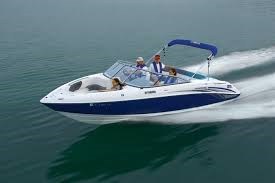RMV Changes to the MA State Markings Regulation 540 CMR 2:22
There has been a change to the Massachusetts State Markings Regulation 540 CMR 2:22 (regulation text below) that will take effect on September 1, 2018 for all commercial motor vehicles that weigh 10,001 lbs. or more used in Intrastate commerce. The RMV changes could affect customers that are written on a Massachusetts Auto Policy class 30 such as plumbers, carpenters, electrician, etc.
The updated regulation affects the type and placement of vehicle markings and will also require any vehicle used in intrastate commerce to have a US DOT number. Affected vehicles include those that are:
- Engaged in intrastate commerce having a gross vehicle weight rating or gross combination weight rating of 10,001 or more pounds; or
- Used in the transportation of hazardous materials in a quantity requiring placarding; or
- Designed to transport more than 15 passengers including the driver, used in intrastate commerce in Massachusetts.
The Massachusetts State Police Truck team has been stopping people to let them know that by September 1, 2018, the USDOT numbers need to be filed with the Federal Motor Carrier Safety Administration (FMCSA) and visible on their vehicles. Click here for a copy of the notice that the State Police Truck Team is handing out.
The updated regulation language is as follows:
2.22: Markings on Commercial Vehicles
(1) Marking.
(a) Effective until August 31, 2018. The owner of every motor truck used for the transportation of goods, wares or merchandise for hire, gain or reward, shall have the owner’s name marked on the truck, to be plainly visible from each side or from the front and rear of the vehicle, provided that motor trucks operated under a lease of more than 30 days shall display either the name of the owner or the lessee, and may display both. For the purpose of 540 CMR 2.22(1), motor truck shall mean any motor vehicle specially designed or equipped to transport personal property over the ways of the Commonwealth and which has a maximum load carrying capacity of over 2,000 lbs., and which is not a Private Passenger Motor Vehicle under 540 CMR 2.05. To the extent there is any conflict between 540 CMR 2.22 and any federal regulation pertaining to markings on commercial motor vehicles, the federal regulation shall control.
(b) Effective September 1, 2018. The owner of every motor truck used for the transportation of goods, wares or merchandise for hire, gain or reward, shall have the owner’s name marked on the truck, to be plainly visible from each side, be in permanent letters that contrast sharply in color with the background on which the letters are placed; be readily legible during daylight hours from a distance of 50 feet while the motor truck is stationary; and be kept and maintained in a manner that retains the legibility required by 540 CMR 2.22(1)(b), provided that motor trucks owned or controlled by a farmer and used to transport agricultural products, farm machinery, and/or farm supplies to or from the farmer’s farm; not used in the operation of a common or contract carrier, and used within 150 air miles of the farmer’s farm need not be so marked; and motor trucks operated under a lease of more than 30 days shall display either the name of the owner or the lessee, and may display both. For the purpose of 540 CMR 2.22(1), Motor Truck shall mean any motor vehicle specially designed or equipped to transport personal property over the ways of the Commonwealth and which has a maximum load carrying capacity of between 2,000 lbs. and 10,000 lbs. and which is not a Private Passenger Motor Vehicle under 540 CMR 2.05. To the extent there is any conflict between 540 CMR 2.22 and any federal regulation pertaining to markings on commercial motor vehicles, the federal regulation shall control.
(2) U.S. DOT Number Assignment for Intrastate Carriers. Effective September 1, 2018, every motor vehicle engaged in intrastate commerce in Massachusetts having a gross vehicle weight rating or gross combination weight rating of 10,001 or more lbs.; and every motor vehicle regardless of weight, engaged in intrastate commerce in Massachusetts and used in the transportation of hazardous materials in a quantity requiring placarding; and every motor vehicle designed to transport more than 15 passengers, including the driver, used in intrastate commerce in Massachusetts must be permanently marked with a USDOT number assigned in a manner conforming to the provisions of 49 CFR 390.21.
(3) Penalty. The penalty for a violation of 540 CMR 2.22 is set forth in M.G.L. c. 90, § 20.
Click here for more information on 540 CRM 2.22


 Presented by: June Duncan
Presented by: June Duncan Travel Medical Insurance protects you in the event of an illness or injury when traveling outside your country of residence. It provides key medical benefits in case of an emergency. The level of international medical coverage provided by your domestic insurance provider can vary greatly depending on your plan, so you may have limited coverage or no coverage at all.
Travel Medical Insurance protects you in the event of an illness or injury when traveling outside your country of residence. It provides key medical benefits in case of an emergency. The level of international medical coverage provided by your domestic insurance provider can vary greatly depending on your plan, so you may have limited coverage or no coverage at all.